1. mantra meditation
Meditation is a practice that has been around for centuries, and there are many different ways to meditate. One popular form of meditation is mantra meditation, which involves repeating a certain word or phrase.
The repetition of the mantra helps to focus the mind, and over time it can become second nature. The goal of mantra meditation is to still the mind and achieve a state of inner peace. In order to be effective, the mantra should be chosen carefully.
It should be something that is meaningful to you, and that you can Repeat easily. The best way to find a mantra that works for you is to experiment with different ones until you find one that resonates with you.
With regular practice, mantra meditation can help to calm the mind and promote well-being.
2. Transcendental Meditation
Transcendental Meditation, or TM for short, is a type of meditation that is said to promote inner peace and self-realization. The practice involves sitting with eyes closed and repeating a mantra, or sound, for 20 minutes twice a day.
While the origins of TM are a bit shrouded in mystery, it is thought to have been developed in India by Maharishi Mahesh Yogi in the 1950s. Maharishi claimed that the practice could help people to tap into “transcendental consciousness”, which he described as a state of pure awareness beyond thinking.
In the years since its inception, TM has been practiced by millions of people around the world, including celebrities like Oprah Winfrey and Jerry Seinfeld. While there is some scientific research to support the claims made by Maharishi, many remain skeptical of the benefits of transcendental meditation.
Regardless, it remains one of the most popular forms of meditation today.
3. Metta Meditation
Metta meditation is a practice that cultivates thoughts and feelings of loving-kindness. The aim is to develop a soft and caring attitude towards oneself and others, free from judgment and negativity.
The word “metta” comes from the Pali language, which was spoken in ancient India, and it roughly translates to “friendliness” or “goodwill.” Metta meditation is sometimes also referred to as “loving-kindness meditation.” The practice begins with focusing on the breath and letting go of any distracting thoughts.
Once the mind is calm and focused, the meditator brings to mind a loved one and sends them thoughts of love and compassion. Next, the meditator expands their focus to include all beings, regardless of whether they are friends or foes.
The intention is to cultivate an all-encompassing sense of love and compassion.
4. Mindful Meditation
The practice of mindful meditation is a powerful tool that can help to improve mental and physical health. By focusing on the present moment and observing one’s thoughts and emotions without judgement, it is possible to achieve a sense of inner peace and calm.
It involves sitting in a comfortable position and focusing on your breath. As you focus on your breath, you will notice your thoughts and feelings, but you should not judge them or try to control them.
Mindful meditation has been shown to provide relief from stress, anxiety, and depression, as well as improve sleep quality and concentration. Additionally, recent research suggests that mindfulness meditation may also help to reduce inflammation and pain levels.
For these reasons, it is clear that mindful meditation can be a valuable addition to any wellness routine.
5. Chakra Meditation
Chakra meditation is a type of meditation that focuses on balancing the seven chakras, or energy centers, in the body. The seven chakras are located along the spine, from the base to the crown of the head.
Each chakra is associated with a different color, element, and quality. For example, the root chakra is associated with the color red, the element of earth, and qualities such as grounding and stability.
Chakra meditation involves visualization exercises in which you imagine each chakra as a spinning wheel of light. As you focus on each chakra in turn, you can help to bring them into balance, promoting physical, mental, and emotional well-being.
In addition to visualizations, chakra meditation may also involve mantra chanting, breath work, and other techniques.
6. Vipassana meditation
Vipassana meditation is a form of Buddhist meditation that was popularized by the teacher S. N. Goenka. The word “vipassana” means “insight” or “clear seeing,” and the goal of this practice is to develop a clear understanding of the true nature of reality.
To do this, practitioners focus their attention on their breath and bodily sensations, observing them with detachment and mindfulness. Over time, they develop the ability to see things as they really are, without the distortions of opinion and emotion.
As a result, they become better able to cope with difficult situations in their lives. Vipassana meditation has been shown to be beneficial for mental and physical health, and it is now practiced by people all over the world.
Vipassana meditation can be an enormously helpful tool for anyone seeking to improve their mental well-being and find greater peace in their lives.
7. Yoga Meditation
Though often thought of as a physical practice, the heart of yoga is meditation. The word “yoga” comes from the Sanskrit root yuj, which means “to yoke” or “to unite.” In yoga meditation, the aim is to quiet the fluctuations of the mind and experience our true nature, which is pure consciousness.
Though it may seem difficult at first, with practice, anyone can learn to meditate. The first step is to find a comfortable position. Sitting upright with the spine straight is ideal, but you can also lie down or recline against a wall.
If your mind wanders, simply return your attention to your breath. With time and practice, you will be able to quiet the mind and experience the peace of yoga meditation.
8. Meditation Knowledge
When it comes to meditation, there is a lot of misinformation out there. Some people believe that meditation is a religious practice, when in reality it is not affiliated with any religion.
Others think that meditation is only for people who are seeking inner peace, when in fact it can be beneficial for anyone. The truth is that meditation is a simple, natural technique that anyone can learn and use to improve their health and well-being.
Best of all, meditation is free and does not require any special equipment or training.
So if you’re looking for a way to improve your physical and mental health, why not give meditation a try?


Transcendental Meditation and Migraines, Say Goodbye to Headache
Table of ContentsDifference Between Headache And MigraineTypes Of Headaches Is Migraine More Serious Than Headache? Understanding Migraines Statistics For MigrainesWhy Do Migraines Happen? Types Of Migraines Symptoms Of Migraine Treatments For Migraine Relief Stress And MigrainesTranscendental Meditation

Transcendental Meditation Dangers (Things You Didn’t Know)
Table of ContentsUnderstanding Transcendental MeditationHow Does the Transcendental Meditation Technique Work?How To Do Transcendental MeditationWhat is a mantra?Transcendental Meditation BenefitsWhat Are The Long-Term Effects Of Transcendental Meditation?Why Is Transcendental Meditation
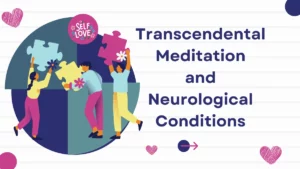
Transcendental Meditation and Neurological Conditions | Quick Cure
Table of ContentsWhat Is Transcendental Meditation?Transcendental Meditation And EpilepsyWhat Is Epilepsy?What Are The Symptoms Of Epilepsy?How Can TM Help With Epilepsy?Which Meditation Is Good For Epilepsy?Which Mantra Is Good For Epilepsy?What
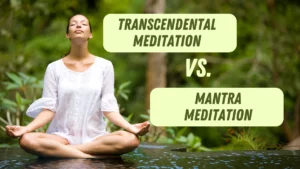
Transcendental Meditation vs Mantra Meditation : Which Wins?
Table of ContentsWhat is Transcendental Meditation?What is Mantra Meditation?Core Differences between Transcendental Meditation and Mantra MeditationComparison of Mantras in both TM and MMHow is MM different from TM in terms
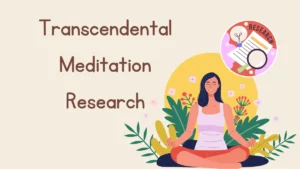
Transcendental Meditation Research Exposes Incredible Health Benefits You Can’t Ignore
Table of ContentsFoundations of Transcendental MeditationResearch on the Transcendental MeditationTranscendental Meditation Research at Harvard UniversityWhat does science say about Transcendental Meditation?What are the scientifically proven benefits of Transcendental Meditation?Transcendental Meditation
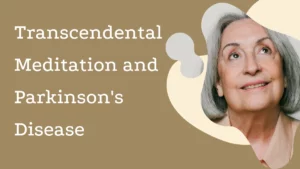
Are Transcendental Meditation and Parkinson’s Disease Related?
Table of ContentsWhat Is Parkinson’s Disease?What Are The Common Symptoms And Challenges Faced By Patients?Current Treatment ModalitiesWhat Are The Main Cause Of Parkinson’s Disease?What Should You Not Do If You
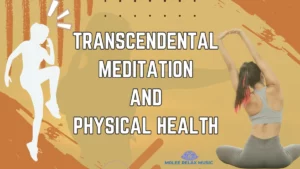
Transcendental Meditation and Physical Health: 8 Ways to Revitalize Your Life
Table of ContentsTranscendental Meditation (TM)Key Aspects:8 Health Benefits of TMTranscendental Meditation and Blood PressureCauses for High Blood PressureHow do you feel when you have high blood pressure?How TM Helps for

Transcendental Meditation and Hormones: Elevate Your Overall Health
Table of ContentsHormonesDopamineSerotoninCortisolGABA (gamma-aminobutyric acid)Transcendental Meditation (TM)Hormone Levels Changes During Transcendental MeditationCan meditation help with hormonal imbalance?Does TM reduce cortisol?Transcendental Meditation and Mental HealthCan Transcendental Meditation build new neurons in
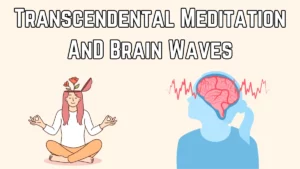
Transcendental Meditation and Brain Waves: Neurological Effects Explained
Table of ContentsBrain waves5 Types Of Brain WavesBrain Wave CoherenceBrain PlasticityTranscendental MeditationMeditation techniques and their impact on the brainEffects Of Meditation On Brain WavesImproving mental performanceBenefits Of Meditation On The
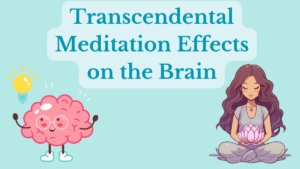
Transcendental Meditation Effects on the Brain: Insights into Cognitive Benefits
Table of ContentsBrain FunctionBrain WavesA Healthier BrainTranscendental MeditationSpiritual Benefits of Transcendental MeditationHow Long Does It Take to See the Benefits of TM?Is TM Better Than Regular Meditation?How does transcendental meditation

Transcendental Meditation and Addiction: Pathways to Recovery
Table of ContentsWhat is Addiction?Types of AddictionCauses for AddictionsSymptoms of AddictionsWhy do Women Try Drugs?Recovery from AddictionWhat is the main goal of recovery?What do you learn in addiction treatment?Road to

Transcendental Meditation and Alcohol Abuse: Find Recovery Paths
Table of ContentsAlcohol AbuseAlcohol is a TrapSigns That You Drink Too MuchDoes alcohol reduce happiness or make you happier?Causes for Alcohol AbuseEffects of Alcohol AbuseNational Institute on Alcohol Abuse and

Transcendental Meditation and Diabetes Relief : Combat Blood Glucose Naturally
Table of ContentsDiabetesTypes of DiabetesWhat Are the Symptoms of Diabetes?Causes of Type-1 DiabetesCauses of Type-2 DiabetesMeditation and Diabetes ManagementWhich Meditation is Best for Diabetes?Can Meditation Control Diabetes?How To Manage Diabetes
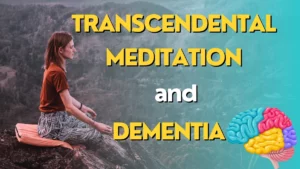
Transcendental Meditation and Dementia: Defying Alzheimer’s Discovered
Table of ContentsDementiaTypes of DementiaWhat is the number one trigger for dementia behavior?What are the three golden rules of dementia?What are the 7 habits to avoid dementia?What is the one

Transcendental Meditation and Insomnia Relief for Better Sleep Naturally
Table of ContentsTranscendental MeditationInsomniaCauses of InsomniaTypes of InsomniaSymptoms of InsomniaInsomnia and AnxietyEffects on Health and Well-BeingWhat frequency cures insomnia?Research on TM and InsomniaScientific Research | Efficacy of Transcendental Meditation to Reduce
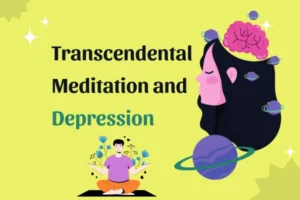
Transcendental Meditation and Depression Exploring Potential Mental Health Benefits
Table of ContentsWhat is Transcendental Meditation?Transcendental Meditation TechniqueDepressionCauses of DepressionSymptoms of Depression and DiagnosisAnxiety vs DepressionTreatment ModalitiesCan transcendental meditation help with depression ?Mechanism of Action on DepressionNatural Treatment for DepressionTranscendental
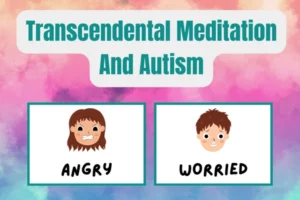
Exposing the Hidden Bond of Transcendental Meditation and Autism
Table of ContentsKey TakeawaysUnderstanding AutismStatistics of Autism Prevalence of Autism SpectrumDifferent types of AutismAutism Spectrum Disorder (ASD)Symptoms of Autism and Different LevelsThe Connection between Autism and StressTranscendental MeditationTranscendental Meditation and Autism:
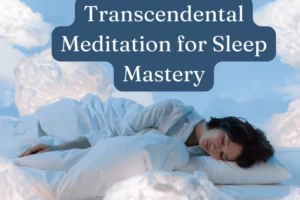
Transcendental Meditation for Sleep Mastery: 7 Insider Tips Revealed for Fall Asleep
Table of ContentsImportance of Sleep and Mental Health ConnectionUnderstanding Transcendental Meditation for SleepMechanism of Relaxation through TMTM vs. Sleep: Comparative AnalysisSleep Patterns: The Symphony WithinLight Sleep – Prelude to Rest:Deep
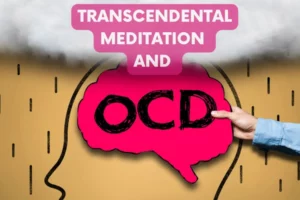
Transcendental Meditation and OCD Management : Experience the Inspiring 3 Real-Life Transformations
Table of ContentsThe Nature of OCD and Its ChallengesDoes OCD Get Worse With Age? Understanding the ProgressionCan You Stop OCD Naturally? Exploring Alternative ApproachesTranscendental Meditation for OCD: How It HelpsGuided

Transcendental Meditation and PTSD Recovery: Top 5 Groundbreaking Research Insights
Table of ContentsUnderstanding PTSD and Its SymptomsWhat are the 20 core PTSD symptoms?What are the 5 levels of PTSD?Overthinking and PTSD: Is it a symptom?What are the six stages of

Transcendental Meditation and ADHD : Discover Natural Relief for Your Restless Mind
Table of ContentsUnderstanding ADHD and Its ChallengesWhat is ADHD?Benefits of Transcendental Meditation (TM) for ADHDDoes TM Help with Focus?Fixing Low Dopamine in ADHD with TMBenefits of Transcendental Meditation for ADHDADHD,


